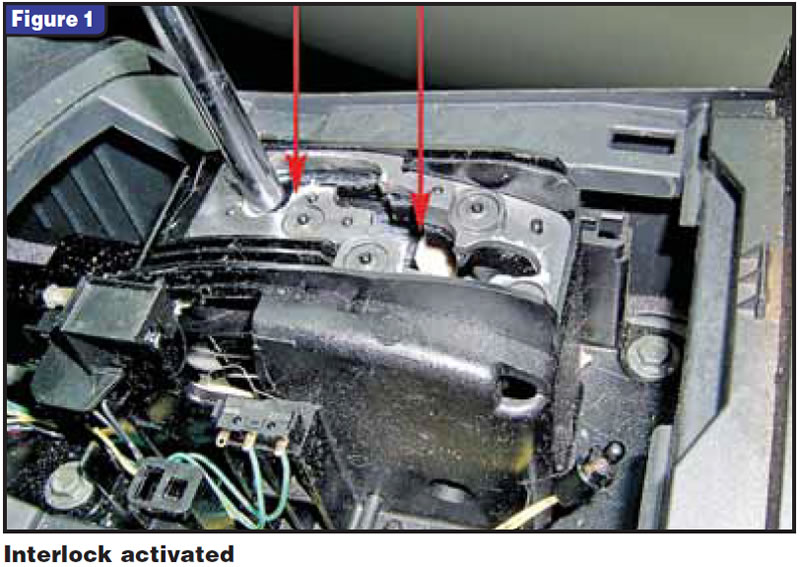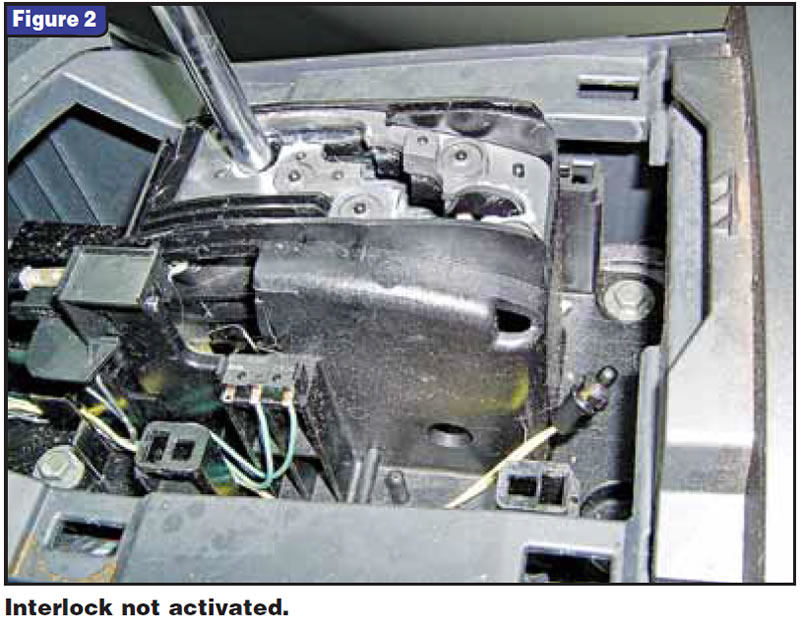
TASC Force Tips
- Author: Ed Lee
A 2001 Nissan Altima was brought to a transmission shop with the complaint that the shifter would not move into reverse or park. The customer explained that the vehicle performed just fine when cold but occasionally refused to go into reverse or park after warming up. The shop performed its routine pre-checks and then road-tested the vehicle. The pre-checks didn’t show any codes present (not even a history code), and the technician wasn’t able to reproduce the condition on the road test. The customer was asked to leave the vehicle for further evaluation.
The next morning the vehicle was warmed up and driven for a second time, and it failed to exhibit any shifter problems during the second road test. The vehicle was due for a transmission service, and the technician reasoned that doing the service would give him the opportunity to see what was visible in the transmission once the pan was off.

This technician recalled a 350 transmission that had a shifter issue when one of the bolts that retain the plate in front of the valve body backed out and interfered with the internal linkage. He also remembered a Sprint transmission that had a piece of a failed bearing lodged in the manual valve.
A thorough check of the valve body and internal linkage failed to find any problems but did eliminate these parts as possible causes. The shop now turned its focus to the shifter and shift cable.
The plate where the shifter handle exits the console was removed to expose the shifter mechanism. Everything visible appeared to be in working order. Silicone lubricant was sprayed on all the moving parts and the top plate was replaced. Next, the vehicle was taken to the local Nissan dealer. The dealer did a thorough inspection of the shifter and again could find no problems. The vehicle was returned to the customer, and the customer was told to bring the vehicle back if the problem returned.

Over the next two days the shifter problem recurred several times, and on one occasion the customer had to lock the vehicle with a separate key and leave the parking brake on because the shifter wouldn’t go past neutral. The now-frustrated customer brought the vehicle back to the transmission shop and was prepared to leave the vehicle at the shop until the problem was fixed.
The shop foreman drove the customer’s car home that night, and when he arrived at his house – a 15-mile distance – lo and behold, the shifter would not go into reverse or park. Luckily the foreman’s driveway was right next to his house, and this proximity helped to reveal a very important clue. The foreman noticed that while he was unable to move the shifter past neutral, he also could not see a reflection of the vehicle’s brake lights while the brake pedal was depressed. After many failed attempts, the shifter did move to the reverse and park positions. The foreman now noticed that when the shifter moved properly, the brake-light reflection was also visible when the brake pedal was depressed.
The foreman returned the vehicle to the shop and removed the top of the console to inspect the shifter interlock mechanism. There are two white plastic arms that move into position to block the park and neutral gates when the interlock is activated.
The shifter interlock is activated any time the ignition switch is in the “on” position and the vehicle is stopped or moving slower than 4 mph and the brake pedal is NOT depressed. This guarantees that the driver cannot move the shifter to the reverse or drive position without depressing the brake pedal. After the vehicle reaches a speed of 4 mph or greater, the interlock system automatically engages and remains engaged, regardless of whether the brake pedal is depressed. This feature guarantees that the vehicle shifter cannot be moved to the reverse position while the vehicle is moving faster than 4 mph. The brake switch was found to be defective, and replacing it fixed the shifter problem. The alarming thing was that the driver was unaware that her brake lights were not working on occasion. It was fortunate that the issue with the shifter exposed the brake-light problem before it caused a rear-end collision.

Ed Lee is a Sonnax Technical Specialist and a member of the TASC Force (Technical Automotive Specialties Committee), a group of recognized industry technical specialists, transmission rebuilders and Sonnax Industries Inc. technicians. ©2007 Sonnax Industries Inc.













